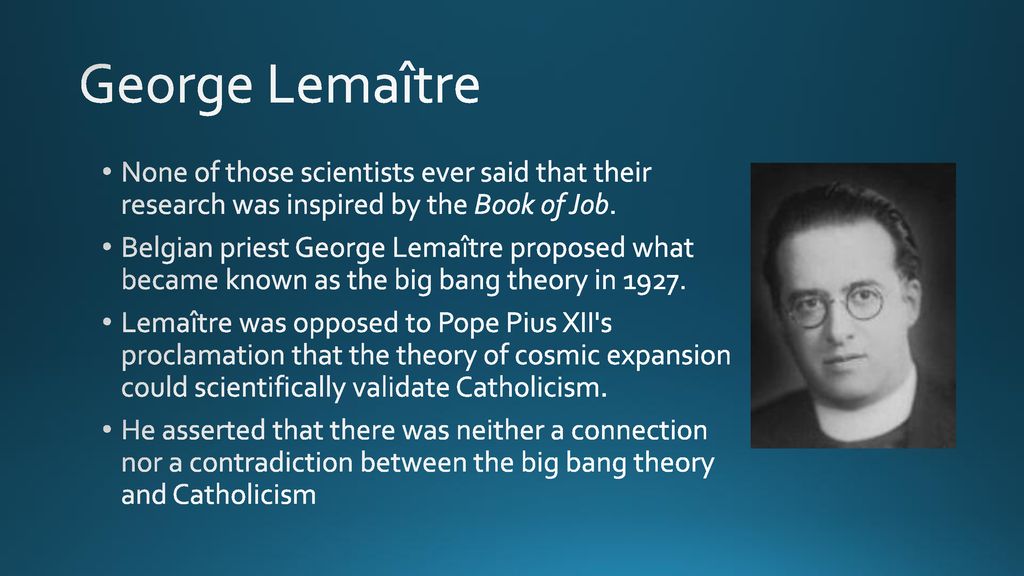Wednesday, August 21, 2019
The Heavens of Georges Lemaître
The universe is expanding. The first to prove this was American astronomer Edwin Hubble. In 1929 he reported the more distant the galaxies the faster they move away. This relationship, which defines the distance to the galaxy and the rate of retreat, is called Hubble's law. It is the backbone of modern cosmology and appears in high school textbooks. So begins the column Word and Silence in the Peace Weekly.
Last October, the International Astronomical Union changed the name to Hubble-Lemaître Law and asked that it be so-called. Lemaître's pioneering work on cosmic expansion was admitted, lately.
Georges Lemaître (1894-1966) was a Belgian Jesuit priest. Although he was ten years younger than Einstein, he was active at the same time. Einstein's equations were solved to present the expansion of the universe for the first time. The paper was published in 1927, two years ahead of Hubble's observations.
The expanding universe hints to a beginning of the universe. If we go back in the time of expansion, will we not meet with a small initial shape? Lemaitre called the original seed a "primitive atom". The universe now is the result of the expansion of this primitive atom. This is the foundation of the big bang universe theory, which is established theory today. Lemaître is an integral part of the history of the big bang.
The big bang connects us at first glance with Genesis and the creation of the heavens and the earth. The Catholic Church responded favorably. Pope Pius XII said at the Pontifical Academy of Sciences in 1951: "Today's science seems to have succeeded in testifying to the original moment of creation."
The Pontifical Academy of Sciences was reorganized in 1936 during the time of Pope Pius XI. Annually, academic conferences are held to illuminate scientific development and submit annual reports. Lemaitre was a founding member and was chairman from 1960.
How did Lemaître accept the pope's bold speech that welcomed his theory? First of all, the media of that time reported the amazing changes in the Vatican. However, some scientists responded very critically. The intention to justify faith by the scientific theory was not right. The same was true of Lemaître. He advised that forcing the connection between science and theology was neither help to science or the church.
Today the church is neither wary nor opposed to science. The church does not try to stop the amazing progress of science. "The Church has no wish to hold back the marvelous progress of science. On the contrary, she rejoices and even delights in acknowledging the enormous potential that God has given to the human mind" (Joy of the Gospel #243).
Faith and science once opposed each other, now recognize and respect each other. Science is the effort of the human mind to reach the mystery of the universe. Faith tries to answer the ultimate question thrown to the naked soul before Mother Nature. The church does not regard the Bible as a science textbook and has fully transferred this role to science.
Lemaître was made a monsignor in 1960 and died in 1966. As a leading scientist and member of the clergy, he contributed to the correct relationship between science and faith. In particular, scientific theory, no matter how plausible, religion should not judge it right or wrong. The theory of science can be amended or discarded at any time, but the church pursues the values of eternity.
In the face of the dazzling developments of modern science.Lemaître's words are still worth pondering. "Does the church need science? No. The cross and the gospel are enough."
Subscribe to:
Comments (Atom)
